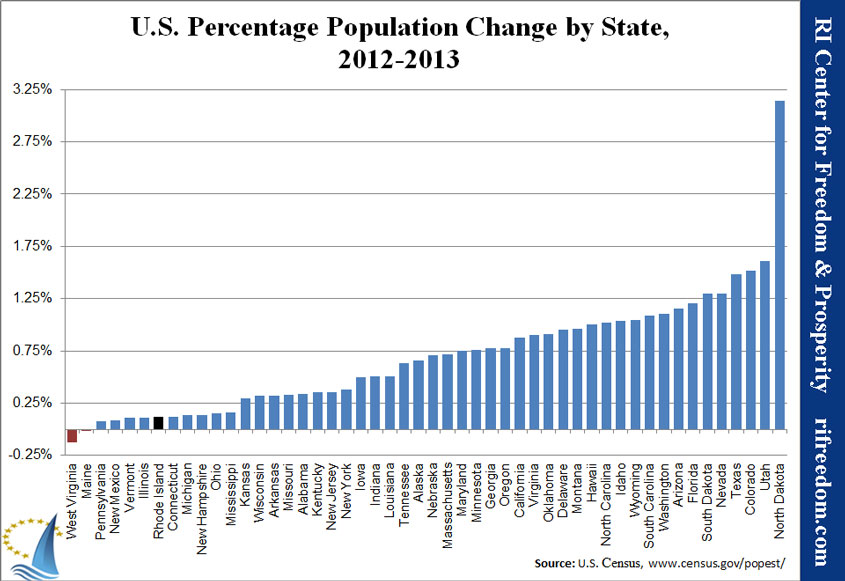Rhode Island: A Growing Population in an Abysmal Economy
The U.S. Census is out, today, with updated estimates for the populations of each state. The real telling data will come next month, when the Census releases the more detailed results about immigration, births, deaths, and age brackets.
Nonetheless, the buzz has begun, because 2013’s small population increase follows eight years during which Rhode Island’s population declined; this decade, it was the only state to have that result twice in a row. That potentially positive result comes with some important caveats, however.
The Census changed methodologies, this year. Because the change applied evenly across the states, there isn’t any obvious reason why it should have affected the Ocean State differently. On the other hand, if it turns out that the agency captured a particular group more precisely and Rhode Island’s peculiarities make that group more significant, it could have made the numbers not entirely comparable from year to year.
The Ocean State is still estimated to be below its 2010 Census count. In fact, it’s one of only two states of which that’s true, and is many times worse off than Maine, which barely edged into the category this year.
Rhode Island is still in the bottom 10, with year-over-year growth one-seventh the size of the national average. Our economy, our retirement systems, and our social institutions rely to some extent on a certain amount of growth. In that regard, growth below that amount is tantamount to a decrease in its effect.
Policy differences make it telling which states are on the other end of the rankings. One reason that state population growth rankings are an important indicator is that it gives some idea which sorts of policies attract immigrants, give retirees a reason to stay put, and make young families optimistic enough to have babies. The following chart shows the states ranked by their year-over-year percentage increases.
A growing population isn’t necessarily a good thing in conjunction with other data. Every month, we’ve tracked the shrinking of Rhode Island’s labor force; that’s the total number of Rhode Islanders who are either working or actively looking for work. If Rhode Island’s population is growing but fewer people are participating in the state’s workforce, then there are more people who aren’t contributing to the state’s economic output. There are also potentially more people who are taking advantage of government programs, for which money must be taken out of the economy.
The population casts a dark light on Rhode Island’s unemployment rate. For November, Rhode Island was tied with Nevada for the worst unemployment rate in the country. The unemployment rate is the percentage of people who are counted within the labor force and who say that they are not employed. In stark contrast to Rhode Island, Nevada is on the right side of the above chart, indicating that its population is growing relatively quickly. In other words, Nevada’s unemployment rate is more an indication that it’s having to find work for a growing number of people; that’s a much more optimistic way to be tied for last place in unemployment than Rhode Island’s perpetual stagnation and decline.


Leave a Reply
Want to join the discussion?Feel free to contribute!